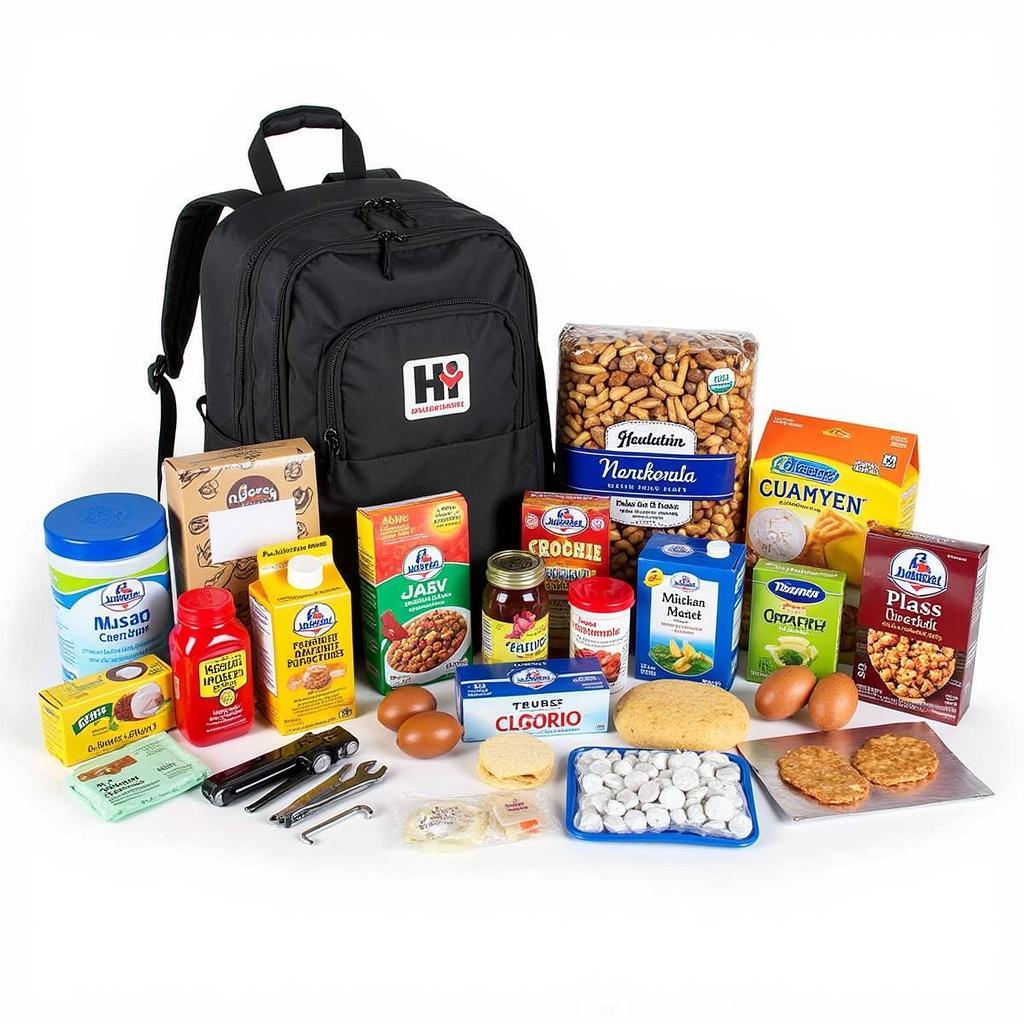Survival Food For Family Of Four is a crucial aspect of preparedness for any unforeseen circumstances, from natural disasters to economic downturns. Having a well-stocked pantry can provide peace of mind and ensure your family’s well-being during challenging times. This guide offers a comprehensive overview of building a survival food supply for a family of four, covering essential food items, storage techniques, and important considerations. A 4 week food supply can be a great starting point for many families.
Building Your Survival Food Stockpile: Essential Items
When considering survival food for family of four, prioritize non-perishable items that require minimal preparation and offer balanced nutrition. Focus on foods your family enjoys and will readily consume. This will not only sustain them physically but also boost morale during stressful situations. Some key categories to include are:
- Grains: Rice, pasta, oats, quinoa, and flour are excellent sources of carbohydrates for energy. Consider vacuum-sealing these for long-term storage.
- Proteins: Canned beans, lentils, dried meat, and protein bars offer essential amino acids. Don’t forget about nuts and seeds, which are packed with protein and healthy fats.
- Fruits and Vegetables: Canned fruits and vegetables, dried fruit, and freeze-dried options retain vital vitamins and minerals.
- Dairy and Alternatives: Powdered milk, shelf-stable milk alternatives, and canned evaporated milk can supplement calcium intake.
- Fats and Oils: Stored properly in a cool, dark place, oils like olive oil and coconut oil are crucial for calorie intake.
- Other Essentials: Don’t overlook comfort foods like coffee, tea, and spices, which can significantly improve morale. A well-rounded supply also includes water purification tablets, a first-aid kit, and basic tools.
Food Storage for Long-Term Preparedness
Proper storage is paramount to maintaining the quality and safety of your survival food. A cool, dry, and dark environment is ideal for most non-perishable items.
- Canned Goods: Inspect cans regularly for dents or rust, which can compromise the seal. Rotate your stock using the FIFO (First In, First Out) method to minimize waste.
- Dried Goods: Store in airtight containers to protect against moisture, pests, and oxygen. Consider using oxygen absorbers for optimal long-term storage.
- Water Storage: Store water in food-grade containers and rotate your supply every six months. Water purification tablets are essential for supplementing your stored water.
How Much Survival Food Do I Need?
Determining the appropriate amount of survival food depends on various factors, including family size, dietary needs, and potential emergency scenarios. A 6 month supply of food provides a significant safety net.
Calculating Your Family’s Needs
A good starting point is to aim for a minimum of one-month supply of non-perishable food per person. For a family of four, this translates to a four-month supply. Consider gradually building up to a year food supply for enhanced preparedness.
Special Dietary Needs
If anyone in your family has allergies or specific dietary requirements, factor these into your survival food planning. Ensure you have ample supplies of suitable alternatives.
“Planning for dietary restrictions in survival scenarios is often overlooked. Ensure everyone’s needs are met,” advises Dr. Emily Carter, a registered dietitian specializing in emergency preparedness.
 Emergency Food Kit for a Family
Emergency Food Kit for a Family
Maintaining and Rotating Your Survival Food Stock
Regularly inspect your survival food stockpile for expired or damaged items. Rotating your stock using the FIFO method ensures that older items are consumed before they expire, minimizing waste. “Regularly rotating your food supply is just as important as building it in the first place,” notes survival expert John Miller. Consider a food survival kit family of 4 for short term emergency situations. Having a top emergency food supply will give you peace of mind.
Conclusion
Creating a survival food supply for your family of four is a proactive step toward ensuring their well-being during unexpected events. By focusing on essential items, proper storage, and regular maintenance, you can create a reliable safety net for your loved ones. Start building your survival food stockpile today and enjoy the peace of mind that comes with being prepared.
FAQ
- What is the shelf life of canned goods?
- How should I store dried beans and grains?
- What is the best way to purify water in an emergency?
- How much water should I store per person?
- What are some good sources of protein for a survival food kit?
- What are some essential non-food items to include in a survival kit?
- How can I rotate my food supply efficiently?
Common Scenarios Requiring Survival Food
- Natural Disasters (hurricanes, earthquakes, floods)
- Power Outages
- Economic Disruptions
- Job Loss
- Pandemic
Further Reading
Consider reading more about building a 3-month, 6-month, or year-long emergency food supply on our website.
When you need support, please contact us at Phone Number: 02437655121, Email: minacones@gmail.com or visit our address: 3PGH+8R9, ĐT70A, thôn Trung, Bắc Từ Liêm, Hà Nội, Việt Nam. We have a 24/7 customer support team.